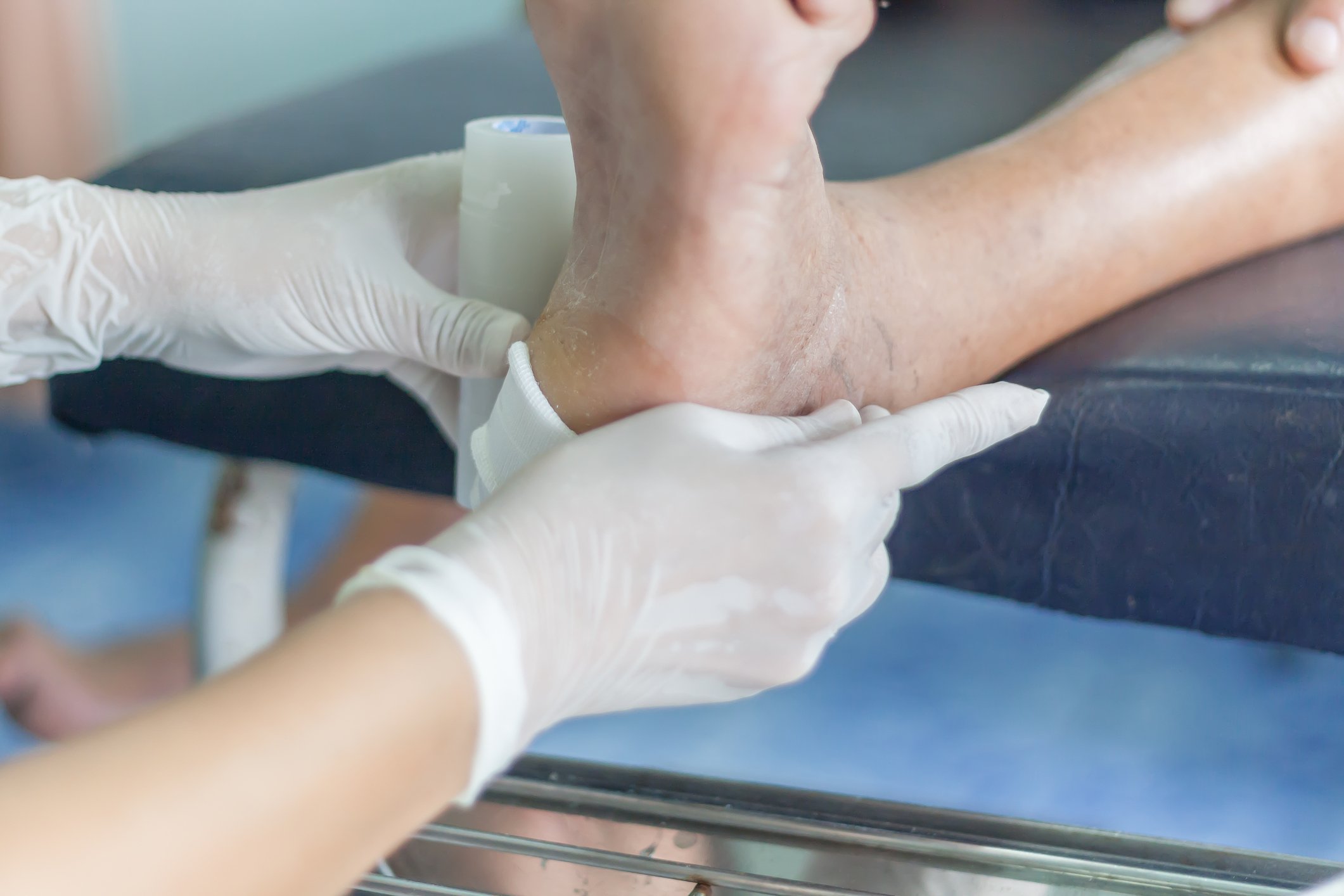If you have diabetes, you are at a higher risk of developing a wound if you have Diabetic Neuropathy, Peripheral Artery Disease (PAD) or other risk factors.
According to the most recent statistics from the National Institute of Health, there are more than 30.3 million people in the US with diabetes and over 7 million of those people will have a diabetic foot ulcer at some point in their life. If left untreated, these ulcers can lead to infection of the blood (sepsis), bone (osteomyelitis) or tissue (necrotizing fasciitis, ischemia or gangrene) or even amputation.
Risk Factors
Diabetic Neuropathy causes damage to the nerves and can alter sensation. It can either cause increased sensitivity and pain or a complete loss of sensation. Peripheral Arterial Disease causes blockages of the arteries to the legs and feet. When this happens, blood can’t deliver the nutrients and oxygen which is key to healing wounds.
Other risk factors include being male, 60+ years or older, having an abnormal shape of the foot including previous amputation or ulcers, difficulty with vision, chronic kidney disease and/or having elevated or uncontrolled blood glucose levels
Wound Care
The best way to care for a diabetic foot ulcer is to not get one in the first place! Prevention is key. Follow these steps to reduce the risk:
- Wash your feet daily and use clean, soft, cotton socks.
- Inspect your feet every day. Ask someone to help you or use a mirror on the floor.
- Always wear good fitting supportive shoes. Check the insides before you put them on.
- Never walk barefoot
- Don’t trim your own nail or remove calluses or lesions by yourself
- See a podiatrist regularly for nail and foot care
If you do develop a wound, don’t ignore it! Here are some easy steps to follow to care for your Diabetic Foot Ulcer (DFU):
- Wash daily with soap and water, do not scrub or use any alcohol or peroxide—soap and water are the best
- Pat dry
- Use a very small amount of antibiotic ointment and cover with a bandage, change the dressing daily (twice a day if it becomes soiled)
- Try to keep pressure off the wound and don’t step on it if it’s on the bottom of your foot
- Look for signs of infection: fever, pain, redness, warmth, foul odor or drainage
- Remember to always keep it clean, dry and covered (Don’t leave it “open to air” to dry out as this can actually stop the wound from healing)
Make an appointment with your podiatrist if you have ingrown toenails, blisters, plantar warts or athlete’s foot, and especially if you see signs of infection (pain, fever, redness, warmth, foul odor or pus-like drainage).
If the wound doesn’t seem to get better, a visit with one of our vascular physicians may be needed. You should see your doctor if the wound does not show signs of improvement in 2 weeks, if it’s bigger than 2cm, or if the wound is so deep that you see bone.









.jpg?width=944&name=Castle-Connolly-Top-Doctors-Emblem-Large%20(4).jpg)